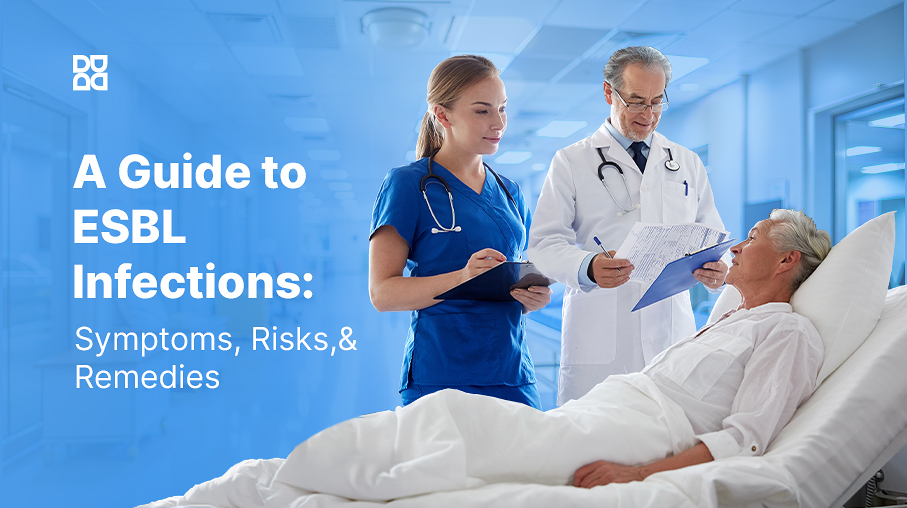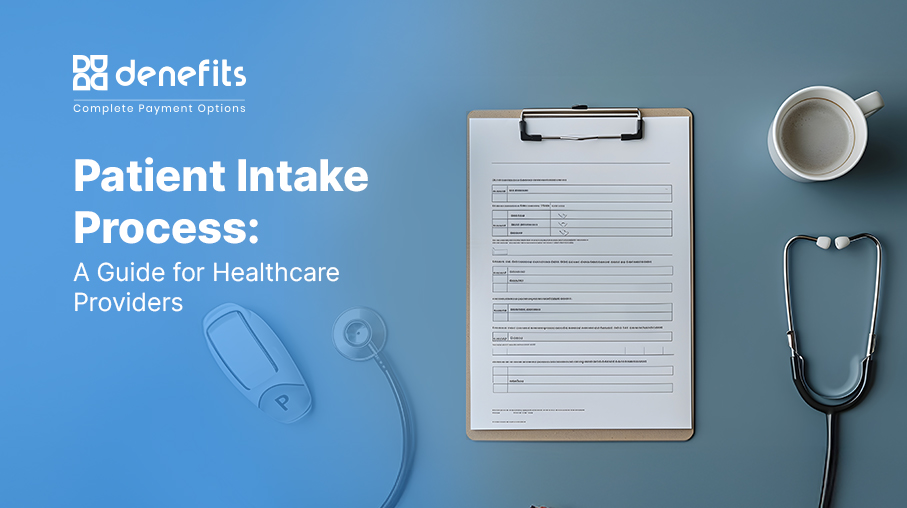
Some infections come quietly but demand urgent attention, and ESBL is one of them. It disrupts treatment plans by resisting the most common antibiotics. What begins as a simple urinary issue or hospital visit can turn complex if ESBL infection bacteria are involved.
These bacteria move through contact, live on surfaces, and linger in places we often trust. While symptoms might stay hidden, the risk keeps growing. That’s why understanding the behavior of these bacteria is essential. It helps you protect yourself and others around you.
Let’s see how this bacteria can harm your body and what are common symptoms. We will also check treatment options and how you can manage their costing.
What Is ESBL?
ESBL Medical Abbreviation Explained
ESBL means Extended Spectrum Beta-Lactamase. It’s an enzyme made by certain harmful bacteria. These bacteria include types like E. coli and Klebsiella pneumoniae. And they can cause infections.
ESBL helps bacteria resist common antibiotics. This includes penicillin and cephalosporins. It breaks down these antibiotics, making them weak or totally ineffective.
You can get ESBL bacteria through direct contact, dirty surfaces, or infected medical tools. Patients with weak immune systems or long hospital stays face higher infection risks.
Understanding Extended Spectrum Beta-Lactamase (ESBL)
ESBL helps bacteria survive antibiotic treatment. It makes infections harder to cure as it quickly breaks apart the chemicals in antibiotics.
Doctors usually have to use stronger antibiotics to treat these tougher infections. Many of these medicines are less common and can have more side effects. ESBL infections often spread rapidly in hospitals and nursing homes.
These germs easily pass from person to person if care isn't taken. That's why careful use of antibiotics is very important. Also, avoiding unnecessary antibiotic use helps slow down the spread of ESBL bacteria. This protects you and others from infections that are difficult to treat.
ESBL Bacteria and How They Spread
You can easily catch ESBL bacteria by touching water or dirt with germs. This often happens if the water or dirt has human or animal poop. Even touching animals that carry ESBL bacteria can pass these germs to you.
Having certain infections, like MRSA, puts you at higher risk. These infections resist antibiotics, making it easier for ESBL bacteria to infect you.
You can also pass ESBL bacteria to others without even knowing it. This can happen by shaking hands or touching surfaces that others touch afterward. Sometimes, even breathing closely on someone can spread these germs.
In some cases, you might carry ESBL bacteria without feeling sick—this is colonization. Colonization means the germs live in your body, but you have no symptoms. You won't need treatment if colonized, but you can still infect someone else. If another person gets sick from these germs, they'll probably need medical care.
That's why hygiene is your best protection against ESBL bacteria. Make sure to wash your hands after touching animals or dirty surfaces. Doing this regularly helps protect you and the people around you.
ESBL Infection and Its Types
What is an ESBL Infection?
An ESBL infection happens when bacteria with ESBL enzymes enter your body and cause sickness. These bacteria fight off common antibiotics, making treatment difficult. ESBL bacteria often infect areas like your urine, blood, lungs, or wounds.
Doctors must use stronger antibiotics for ESBL infections. These medicines may have more side effects. So, catching and treating these infections early matters a lot.
ESBL Urinary Tract Infection (UTI)
An ESBL urinary tract infection (UTI) is very common. It usually happens when harmful bacteria, like ESBL-producing E. coli, enter your urinary tract.
You might notice symptoms like:
- Pain or burning when you pee.
- Needing to pee often, even if nothing comes out.
- Cloudy, smelly, or dark-colored urine.
- Pressure or mild pain in your lower belly.
- Fever or chills if the infection reaches your kidneys.
Doctors treat ESBL UTIs with special antibiotics made to fight resistant germs. Quick treatment helps you feel better and stops the infection from spreading.
ESBL in Urine – What It Means
If your doctor finds ESBL bacteria in your urine, it means resistant germs are in your urinary tract. But it doesn’t always mean you're sick.
Sometimes, you can carry ESBL bacteria without having any symptoms. Doctors call this colonization. If you're colonized, you usually don't need antibiotics. But you can still spread these germs to other people, who might then become sick.
That's why good hygiene matters. Washing your hands often and thoroughly helps stop the spread. If you do get symptoms, talk to your doctor right away. Quick care is the key to staying healthy and protecting others around you.
ESBL Infection Symptoms
Common ESBL Symptoms
Symptoms of an ESBL infection vary. Mostly, they depend on where the bacteria spread in the body.
- If the infection is in the blood, you may feel chills, fever, weakness, and confusion.
- A lung infection can lead to coughing, shortness of breath, chest pain, and fatigue.
- If the bacteria affect a wound, you might see redness, swelling, pus, or slow healing.
ESBL UTI Symptoms to Watch For
An ESBL UTI happens when resistant bacteria like E. coli infect the urinary tract.
- Symptoms often begin with a strong, frequent urge to urinate—even if little comes out.
- You might feel a burning sensation during urination, pain in your lower abdomen, and notice cloudy or foul-smelling urine.
- Some people also develop a fever, chills, or back pain, especially if the infection travels to the kidneys.
- Dark-colored urine and feeling tired or unwell are other signs.
Note:
If you have these symptoms, it’s important to contact your doctor right away. ESBL UTIs need special antibiotics that can effectively target resistant bacteria.
Diagnosing ESBL Infections
Doctors diagnose ESBL infections by taking samples from the infected area. It can be your urine, blood, or wound swabs. These samples are sent to a lab. Tests can determine if ESBL-producing bacteria are present or not.
A common method is a culture test. This test checks how bacteria grow and respond to antibiotics. If the bacteria resist penicillin or cephalosporins, ESBL may be the cause. Your doctor might also run additional tests, like PCR or enzyme detection.
ESBL Infection Treatment Options
Standard ESBL Treatment Protocols
Treating ESBL infections requires specific antibiotics. Since common antibiotics like penicillins and cephalosporins often don’t work. That’s why doctors typically use carbapenems. It is a stronger antibiotic designed to fight resistant bacteria.
Treatment usually starts after lab tests confirm the infection. In some cases, doctors may also use other antibiotics like fosfomycin and ceftazidime-avibactam. The use depends on the type and location of the infection.
It’s important to follow the full treatment course. Even if symptoms improve early. Completing antibiotics helps prevent relapses and the spread of even more resistant bacteria. It can ensure long-term recovery and better health.
ESBL UTI Treatment Approaches
When ESBL-producing bacteria cause a UTI, treatment becomes more specialized.
- Doctors avoid common antibiotics and instead prescribe drugs known to work against resistant strains, like carbapenems or fosfomycin.
- If the infection is mild and caught early, oral antibiotics may be effective.
- In more severe cases, patients may need hospitalization for IV antibiotics.
Doctors base treatment on urine culture results, ensuring the chosen medicine matches the exact bacteria causing the infection. Drinking plenty of fluids and following all medical advice is key to recovery.
Denefits financing Options for Easy & Flexible Payments
ESBL can be left untreated if it’s not causing any harm to you. But once it starts to affect your health then the treatment process can be hectic. You might have to go through multiple tests. And eventually go through a specific treatment process.
The entire process can leave a dent in your finances. That’s why finding doctors who offer flexible financing using Denefits payment plans is important. Denefits financing can break down the cost of the treatment. This way, you can avoid possible financial stress during medical emergencies.
However, you have to inquire about this payment option as not all doctors provide it. Make sure you ask your doctor about possible payment options during consultation.
The End Note
When it comes to your health, clarity brings comfort. Understanding ESBL isn’t about fear. It’s about feeling prepared. With the right steps, the right care, and a bit of support, even the toughest infections can be managed. It’s all about staying mindful, taking action early, and knowing you’ve got options when it matters most.
FAQs
1. Can ESBL be Transmitted Sexually?
ESBL usually doesn't spread through sexual contact directly. But close personal contact during intimacy could increase your infection risk.
2. Can You Die From ESBL?
Yes, severe ESBL infections can become life-threatening. Early treatment helps ensure your recovery and reduces serious complications.
3. Does ESBL Ever Go Away?
Yes, ESBL infections typically go away with proper antibiotic treatment.
4. Is ESBL Dangerous?
Yes, ESBL infections are dangerous because they're resistant to common antibiotics. This makes them harder to treat and more likely to cause complications.
5. What Is ESBL in Urine?
ESBL in urine means resistant bacteria are living in your urinary tract. You might not feel sick, but you can still pass germs to others.
6. Is ESBL Contagious?
Yes, ESBL bacteria easily spread through touching infected people or surfaces. Regular handwashing greatly reduces your chance of catching or spreading ESBL.
7. How Do You Get ESBL?
You usually get ESBL from direct contact with contaminated surfaces, animals, or infected individuals. Hospitals and nursing homes are common places to pick up ESBL germs.
8. What’s ESBL ICD 10?
In medical records, ESBL infections are identified using ICD-10 codes. The most commonly used code is Z16.21



